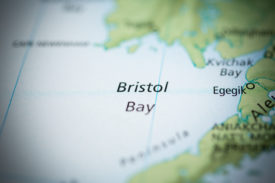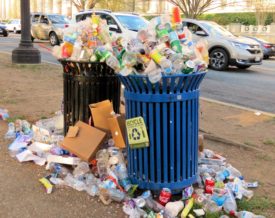 Oregon State University just won a $3.6 million grant for sagebrush ecosystem restoration. That’s good news because sagelands conservation always seems to take a back seat to other landscapes. I wonder if the explanation for sagebrush’s short shrift isn’t surpisingly superficial (how’s that for alliteration?). Looks matter and sagebrush just doesn’t sell like the prettier places do.
Oregon State University just won a $3.6 million grant for sagebrush ecosystem restoration. That’s good news because sagelands conservation always seems to take a back seat to other landscapes. I wonder if the explanation for sagebrush’s short shrift isn’t surpisingly superficial (how’s that for alliteration?). Looks matter and sagebrush just doesn’t sell like the prettier places do.
If so, sagebrush ecology is paying the price for its lack of glam appeal. The American West is home to 100 million acres of sagebrush country, but it is a battered landscape. As the AP story today puts it:
Because of the invasion of non-native plants, increasing wildfires and the expansion of juniper woodlands, sagebrush ecosystems have become one of the most threatened land types in the United States, researchers say.
"We are losing sagebrush-steppe ecosystems at an alarming rate, as wildfires fueled by cheatgrass sweep across the landscape," said project coordinator Jim McIver, an associate professor of rangeland resources.
The ongoing tragedy of conservation biology, with its limited resources, is that large attractive creatures–"charismatic megafauna," in biologist-speak, such as the ivory-billed woodpecker–generate most of the hoopla and therefore receive most of the protection. Less sexy creatures are often ignored, though they may be no less critical to complete and well-functioning ecosystems.
Landscapes tend to go the same way as wildlife. People get animated by old-growth forests, coastlines, canyons, and alpine settings. These are the places that we protect in national parks, photograph endlessly, and write volumes of earnest prose about. Big conservation organizations have little trouble "branding" these ecosystems and drumming up the dollars necessary to protect them from depredations. But sagebrush country is another matter.
 At first glance the drab dun-colored world can appear desiccated, windy, even lifeless. And for some reason, the aesthetics of sagebrush country are particularly anemic in the car-centered view of the world. I’ve never encountered another landscape that looks so dull and hostile from a car at 70 miles per hour but that can be so arrestingly beautiful and complex at pedestrian speeds.
At first glance the drab dun-colored world can appear desiccated, windy, even lifeless. And for some reason, the aesthetics of sagebrush country are particularly anemic in the car-centered view of the world. I’ve never encountered another landscape that looks so dull and hostile from a car at 70 miles per hour but that can be so arrestingly beautiful and complex at pedestrian speeds.
Given their lack of superficial appeal, it’s no surprise that sagebrush ecosystems are so badly stressed and under-protected. The list of insults is long: invasive species, biodiversity loss, fire suppression, unsustainable water withdrawals, grazing, cattle ranging, road-building, fencing… In many places, sagebrush country is so degraded that some of the most intact landscapes are where you would least expect them: the lands that were formerly part of the Hanford Nuclear Reservation and the Yakima Training Center, a large-scale artillery range, to name just two places in Washington.
It’s unfortunate that sagebrush lands are not better preserved because the ecology is worth protecting. They’re home to an astonishing array of birds, rare plants, and even the big charismatic critters like elk, owls, porcupines, cougars, and my personal favorite, the sage grouse. (Sage grouse, in fact, may be one of the better simple indicators of overall sagebrush ecosystem health; and, no surprise, grouse numbers are drastically depressed from historical levels throughout most of the West.) Sagebrush landscapes are beautiful too—particularly during the springtime blooms—but to most observers they lack the dramatic flair of other places.
Sagebrush ecosystems should be near the top of the list of good conservation buys. Sagelands shelter rare and endangered plants and animals, they are under-represented in protected areas, they are are often not in high demand for important uses, and the land (or the rights to it) is comparatively inexpensive. In fact, one of the Northwest’s recent conservation success stories is the Owyhee Initiative, a collaboration working to protect seldom-visited sagebrush country in southwestern Idaho. It’s telling,however, that the group’s website mostly advertises the conventionally scenic portions: river gorges and basalt outcroppings.
Sagebrush ecology, and it’s comparative lack of conservation, strikes me as precisely the reason why we can benefit from a public biodiversity accounting. I’d bet that dollar for dollar, conservationists—and funders of conservation—could do more good for native biodiversity by protecting sagebrush country than by continuing to help the eye-candy ecosystems.







